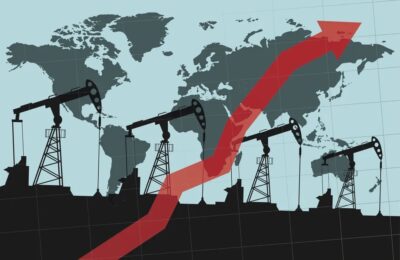Alan Thornett offers a critical review of How to Blow up a Pipeline by Andreas Malm, published by Verso in January 2021,
 When I first saw the title of this book – How to Blow up a Pipeline – I could hardly believe it was serious. Unfortunately it is. It is a vigorously argued appeal for the environmental movement to break from its past and make violent direct action, short of the loss of life, against the fossil fuel infrastructure, central to its strategy to defend the planet.
When I first saw the title of this book – How to Blow up a Pipeline – I could hardly believe it was serious. Unfortunately it is. It is a vigorously argued appeal for the environmental movement to break from its past and make violent direct action, short of the loss of life, against the fossil fuel infrastructure, central to its strategy to defend the planet.
It calls for a direct action wing the climate movement to be established to carry this out. Targets would include oil pipe-lines and refineries, coal mines, power stations and privately owned high pollution vehicles such as SUVs. This, Malm argues, is the only real route to revolutionary change.
In my view such a change would not only be wrong but disastrous. As, I suspect, one of the few on the radical left who has been trained by the British Army in the use of high explosives in order to sabotage railway lines and blow up bridges I am appalled that such a method is being advocated on the Marxist left today in the struggle against climate change.
Anyone taking the title of this book seriously could find a large team of armed police kicking down their door at 4am if they’ve been discovered researching online how to destroy industrial infrastructure. Possession of the materials needed to build an explosive device will get you a lengthy jail sentence. Making an explosive device will get you 10-15 years in a high security prison, assuming you don’t blow yourself up in the process. Discussing with others how to procure explosives will get you a lengthy sentence for a conspiracy charge.
In terms of avoiding loss of life, the worst mass killings committed by Irish Republicans were attacks against property that went wrong such as the La Mon fire or Belfast in which 12 people were burned to death and many other horribly disfigured of Bloody Friday in which five civilians were blown apart.
Andreas Malm has been an environmental activist and writer for many years. He took his doctorate with a dissertation on the history of coal-fired steam power in Britain that was published by Verso as a book – Fossil Capital the rise in steam power and the roots of global warming – in 2016 and which received the Isaac and Tamara Deutscher Memorial Prize before the end of the year. He has a teaching post at Lund University in his native Sweden.[i]
He starts the book by recalling his participation in a mass protest in 1995, in Berlin, at COP1 – the first of the UNs annual climate summits that still take place today. From there he traces the struggle against climate change through three key phase – mostly in the global North.
The first, he argues, was in Britain between 2006 and 2009, when activists organised a series of climate camps next to airports and power stations which culminated in a massive People’s Climate Summit at COP15 Copenhagen in 2009.[ii]
The second was in the USA between 2011 and 2016, after Obama approved new pipeline projects in the USA. Activists launched sit-ins protests against the Keystone XL pipeline, gathered in New York for the “People’s Climate March,” and camped to oppose the Dakota Access Pipeline. The election of Donald Trump brought this to an abrupt end.
The third was global in summer 2018 when Greta Thunberg sat down in front of the Swedish parliament, and was global. What emerged was the most remarkable strike movement in defence of the planet the world had ever seen. Soon after Extinction Rebellion (XR) shut down central London by seizing bridges and road junctions is a spectacular display on non-violent direct action that was to continue until the outbreak of the Covid-19 pandemic.[iii]
Despite all this, he concludes, the problem is now worse. More carbon has been released into the atmosphere in the 25 years since COP1 than in the 75 years before. Activists may have temporarily shut down a mine or forced a government to deny an extraction permit, but the problem has continued unabated. We march, he says, we block, we chain ourselves to things, we remain peaceful, and nothing happens.[iv]
Time for a rethink
It is time, he decided, for a rethink. When, he asks, “will we escalate the struggle?” When do we start physically attacking the things that consume our planet and destroy them with our own hands? “Is there a good reason we have waited this long?” He backs this up with from an article by the British novelist and essayist John Lanchester, published by the London Review of Books in 2007, which asks the same question:
“It is strange and striking that climate change activists have not committed any acts of terrorism. After all terrorism is for the individual by far the modern world’s most effective form of political action, and climate change is an issue about which people feel just as strongly about as, say, animal rights. This is especially noticeable when you bear in mind the ease of things like blowing up petrol stations, or vandalising SUVs… Say (in a city) fifty people vandalised four cars every night for a month… these cars would soon be disappearing from our streets”.[v]
Malm blames “moral” or “strategic” pacifism for this inertia – which, he argues, has taken over the movement. He points in particular to the veteran American journalist and environmental campaigner Bill McGibben – who was the driving force behind opposition to the Keystone XL pipeline and the 350.org environmental network – who, he says, took it from Gandhi and Martin Luther King.[vi] [vii]
He saves his strongest criticism, however, for XR – which he says has codified the idea of non-violent direct action most thoroughly . He quotes Roger Hallam (the co-founder of XR) in this regard:
“There are two types of disruption: violent and non-violent. Violence is a traditional method. It is brilliant at getting attention and creating chaos and disruption, but it is often disastrous when it comes to creating progressive change. Violence destroys democracy and the relationship with opponents which are vital to creating peaceful outcomes to social conflict… In fact, it almost always leads to fascism and authoritarianism. The alternative then, is non-violence.”[viii]
Malm responds that slavery would not have been abolished without violent direct action by the slaves themselves. It was also used successfully by the suffragettes.
Violence, however, is the antithesis of building the biggest and broadest mass movement of progressive forces the world has ever seen on a socially inclusive and democratic basis – which is the strategic task we face today. Building support in the unions is difficult now but it would be many times more difficult once the bombs started going off.
It’s true that violence can’t be ruled out in all circumstances – for example in defence of life or in opposition to extreme brutality. It would, however, as Hallam points out, be a disaster for the climate movement which needs to build the biggest and most diverse movement the world has ever seen if it is to successfully defend the planet. From this perspective both the Hallam’s model of non-violent direct action and the Malm model of embracing violence short of loss of life are elitist and an abandonment of the Marxist method of engaging the largest possible number of people in political activity.
Malm is proposing an ecological version of pseudo-Marxist terrorist organisations like the Red Army Fraction or the Red Brigades, groups born from a despair at the ability of the working class to change society. They may have been motivated by some sort of idealism and hope for a better world, but they contributed nothing to the development of mass movements. They were crushed by the state and their members spent decades in prison, committed suicide or were killed by the police.
These organisations had training from the PLO and Stalinist states. What military background would Malm’s eco-terrorists have? They’d be in prison within days.
Malm has supported non-violent direct action in the past. He recalls how he was involved in the deflation the tyres of SUVs in an affluent neighbourhood of Stockholm in July 2007. SUV owners, he says, awoke to find their cars “reclining on the asphalt.”
On their windshields, was a leaflet. “We have deflated one or more of the tyres on your SUV,”. “Don’t take it personally. It’s your SUV we dislike.” The leaflet pointed out how much fuel SUVs burned and the impact this would have on the planet. At the same time, the saboteurs published a statement exhorting others to copy their work, and making available a “simple manual” for how to release the air from a tyre.[ix]
The proposal he makes in this book, however, is of a very different order. The climate movement, he proposes – if it can’t get a prohibition of all new sources of greenhouse gas emissions agreed by governments – should announce a prohibition unilaterally and be prepared to enforce it “with our bodies and any other means necessary.”
We should, he says, put such new emissions out of commission: “demolish them, burn them or blow them up. Let the capitalists who keep on investing in such emissions know that their properties will be trashed”.[x] Later he points out: “Pipelines are very easily sabotaged. A simple explosive device can put a critical section of pipeline out of operation for weeks, the Pipeline and Gas journal lamented in February 2005.”[xi]
The illusion of a shortcut.
The climate movement should reject Andreas Malm’s appeal and his bid for a shortcut. It reflects, I suspect – apart from political disorientation – a frustration compounded by the lack of a socially just exit strategy from fossil energy.
There are, unfortunately, no shortcuts available with the prospect of a progressive outcome. Either a mass movement will be built with progressive forces within it that can play a global role in the event of the kind of societal and ecological breakdowns that we will be facing if global warming and pollution of the planet is not stopped – or the future will be bleak indeed.
Forcing major structural change against the will of the capitalist system will need a mass movement, and not just amongst environmental activists but amongst the wider population as it is impacted by the crisis.
There is, however, no common view in the wider movement on an exit strategy from fossil energy, nor is there adequate discussion on it. The proposal with the most support – and the proposal that I support – would transfer the fees levied on carbon emissions directly into people’s bank accounts on a heavily progressive basis is James Hansen’s fee and dividend proposal.
This could produce a big reduction in emissions in the short time we have available, and would be capable of commanding the popular support necessary to generate the mass movement necessary to defend the planet. This would need to go alongside a crash programme of renewable energy generation to meet the demand that these new incentives would create.
Interestingly, Noam Chomsky supported Hansen recently in a New Year interview entitled – Where the left goes after Trump – which dealt with how to halt to global warming and climate change.
“If you have a carbon tax don’t do it like Macron did it in France – which led to the yellow vests movement – which was a carbon tax that hits the working class. If you do that you are going to get an uprising. You can have a carbon tax in which the revenue is returned to the public in a progressive manor which then benefits the working class. Yes you pay a bit more for gas but you get a lot more in return.”
I strongly agree with Chomsky on this. Cutting emissions this way is, in the end, the only progressive way of doing it since it can be carried through within an overall taxation framework that is socially and economically progressive. The other alternatives, often advanced by the left, such as production cuts by government decision or rationing do not work, and indeed can have serious negative consequences.
Andreas Malm has been a big asset to the movement – he should, however, think again before making any further attempts to take the movement down what could be a very dangerous road.
[i] He has recently published The Progress of this Storm (Verso Jan 2018) and Corona, Climate and Chronic Emergency (Verso September 2020).
[ii] The Summit collapsed in disarray, however, after the USA, China, Brazil and South Africa refused to back the accord at the last minute. This set the movement back for a long time.
[iii] There was an important earlier phase of the struggle in Britain, it should be said, which was the anti-roads movement in the 1990s though it would not (I assume) affect Malm’s conclusions. A good account of this can be found in Derek Wall’s book Earth First – and the anti-roads movement, Routledge 1999.
[iv] P24 and 25.
[v] P11
[vi] P32 and 33.
[vii] His best known book The End of Nature was published in 1990.
[viii] P35.
[ix] P79.
[x] P67
[xi] P70


